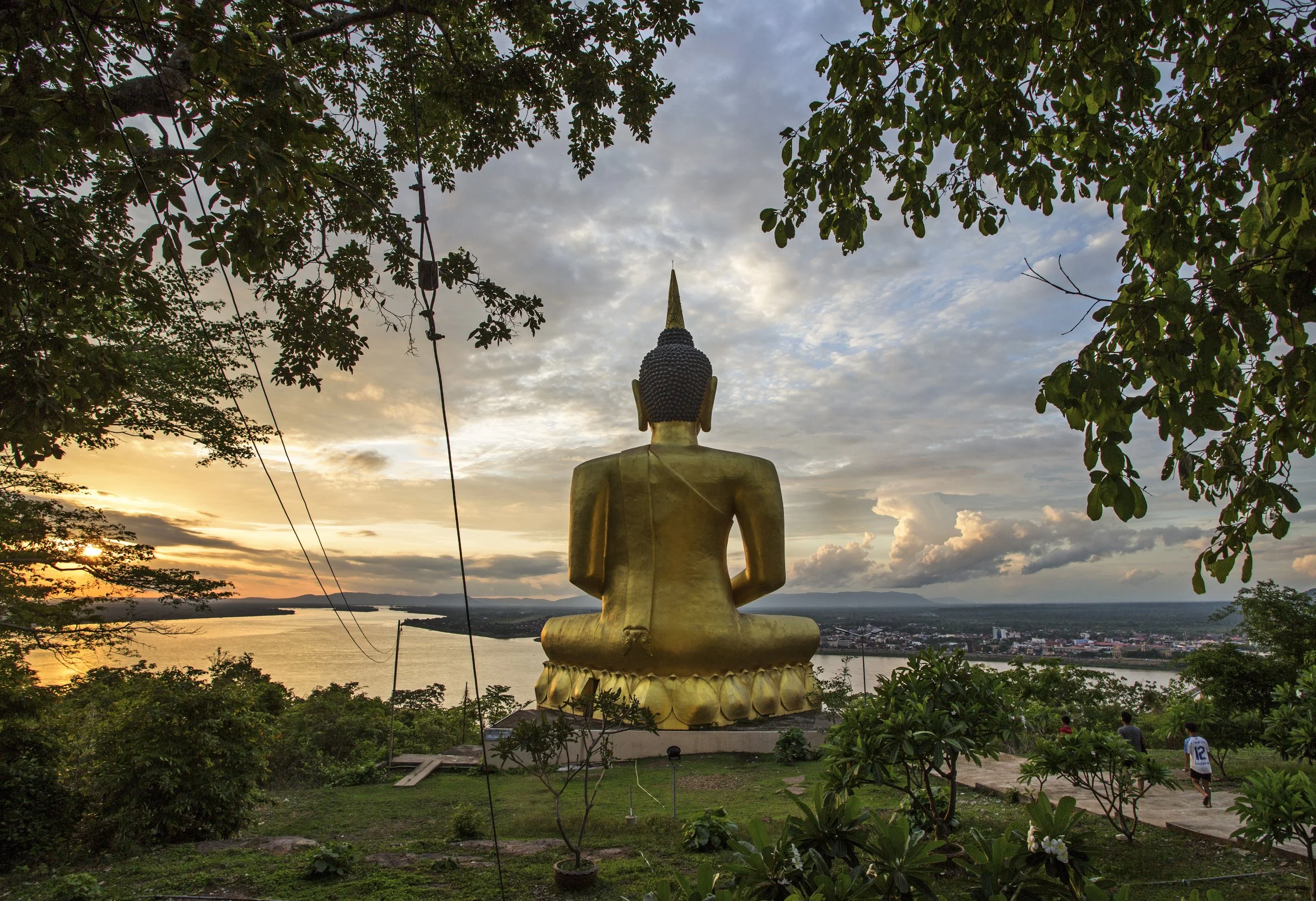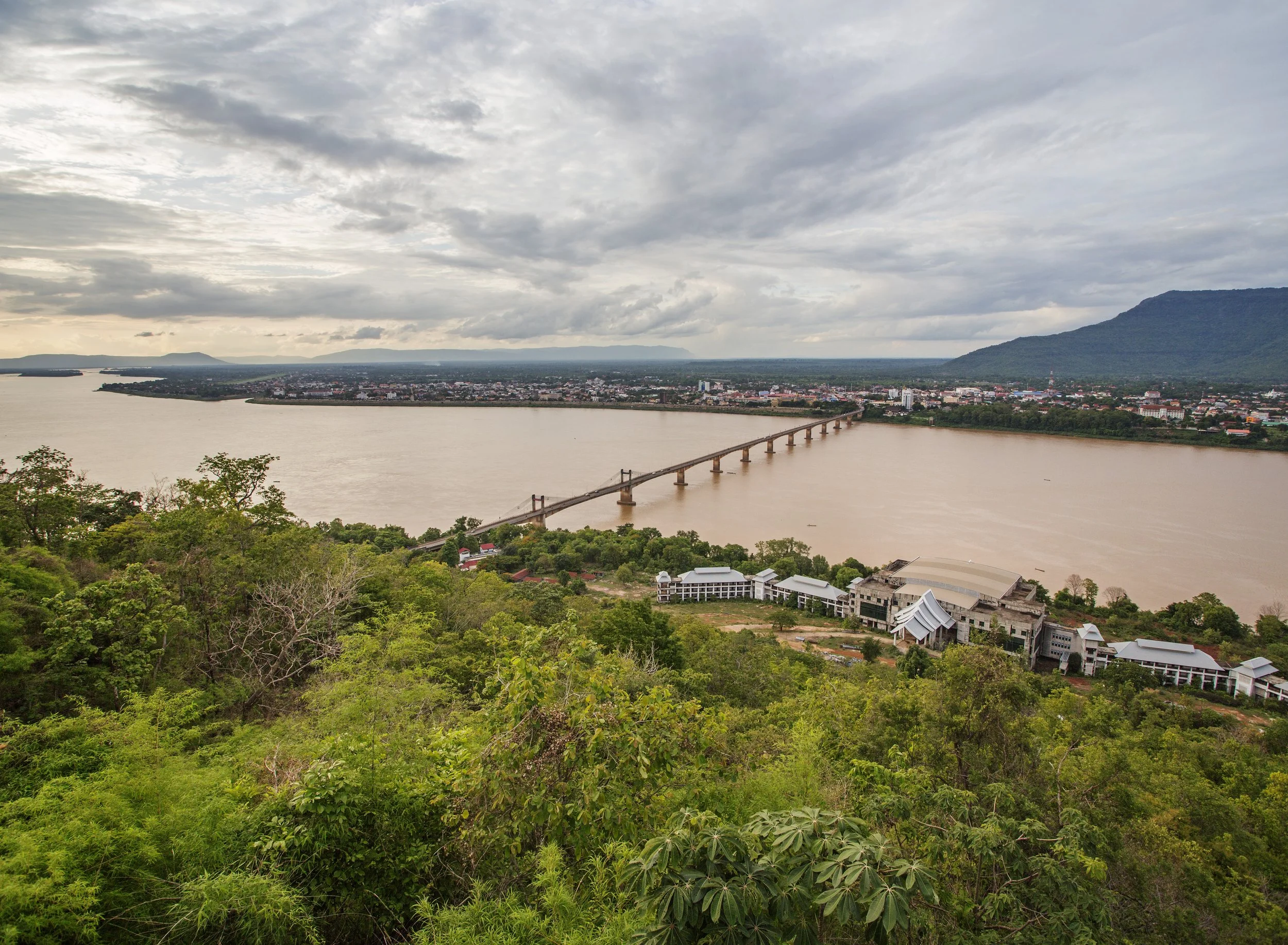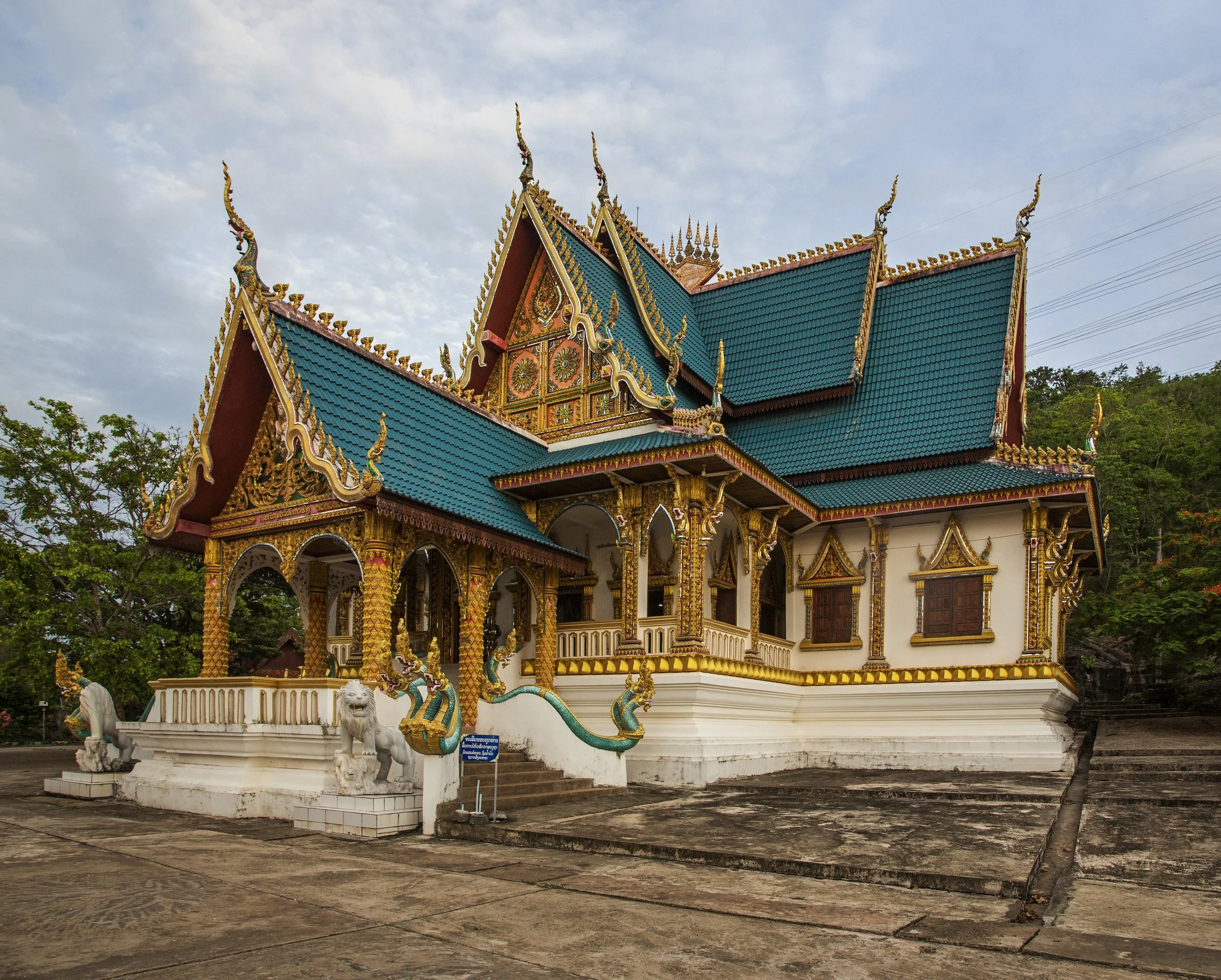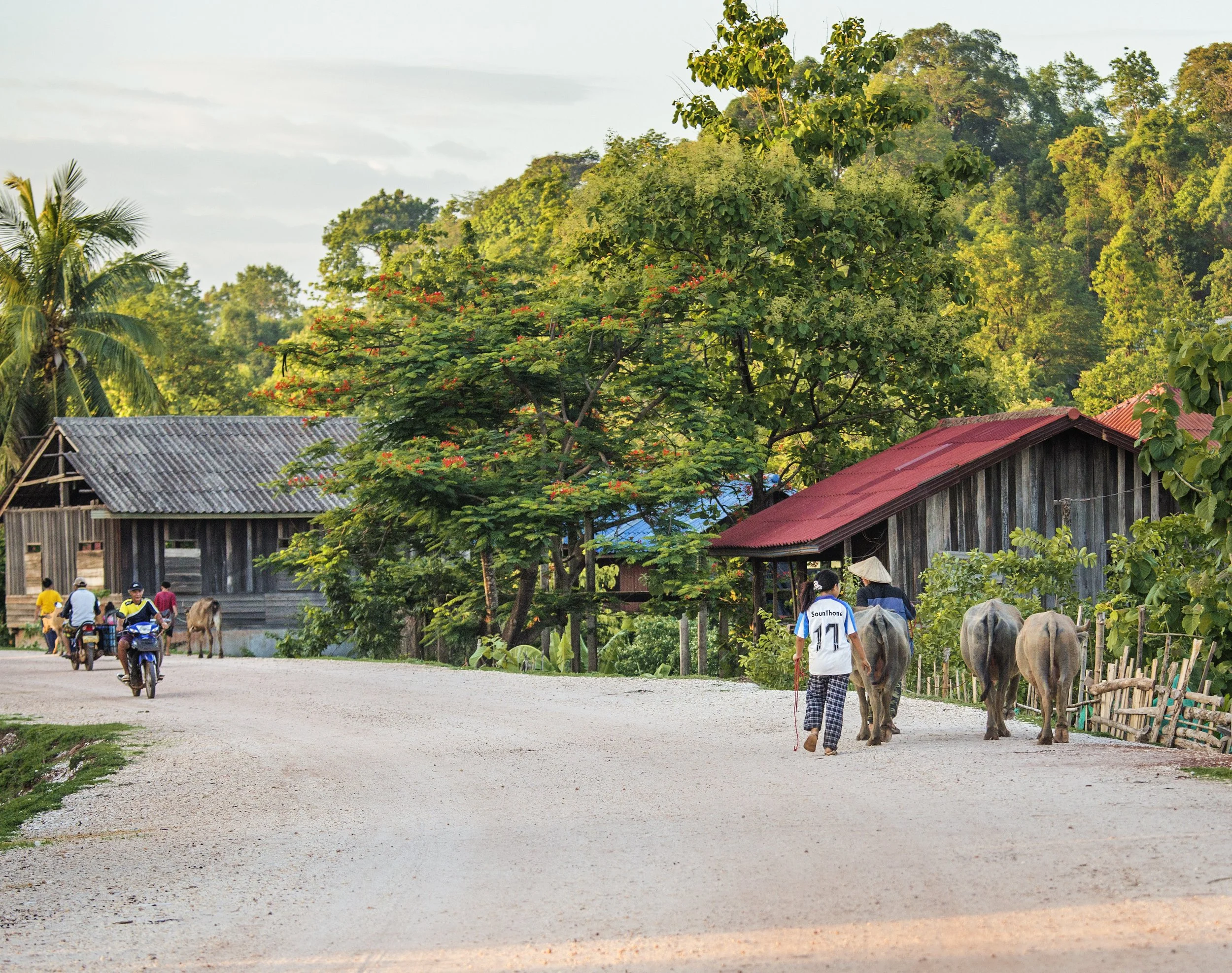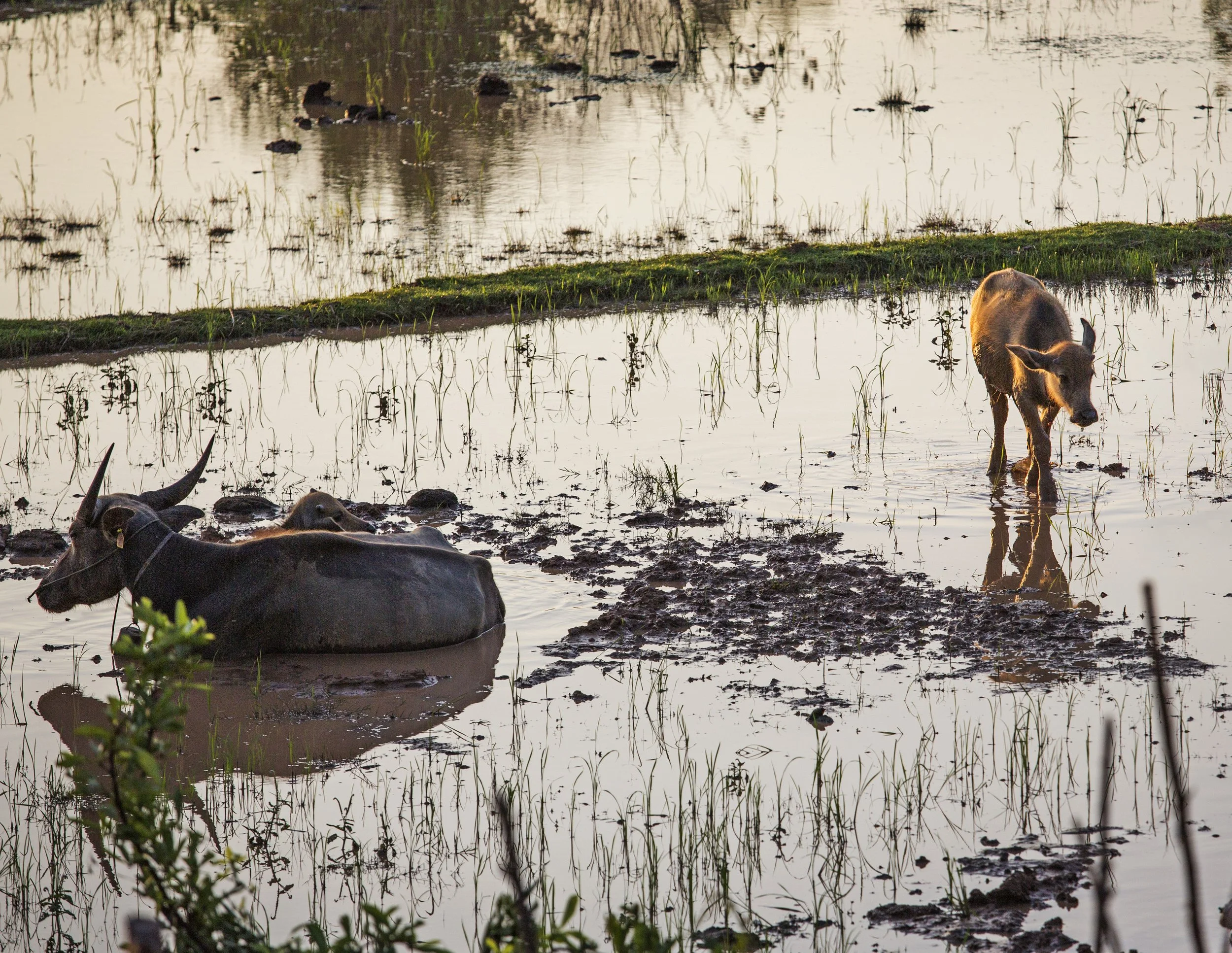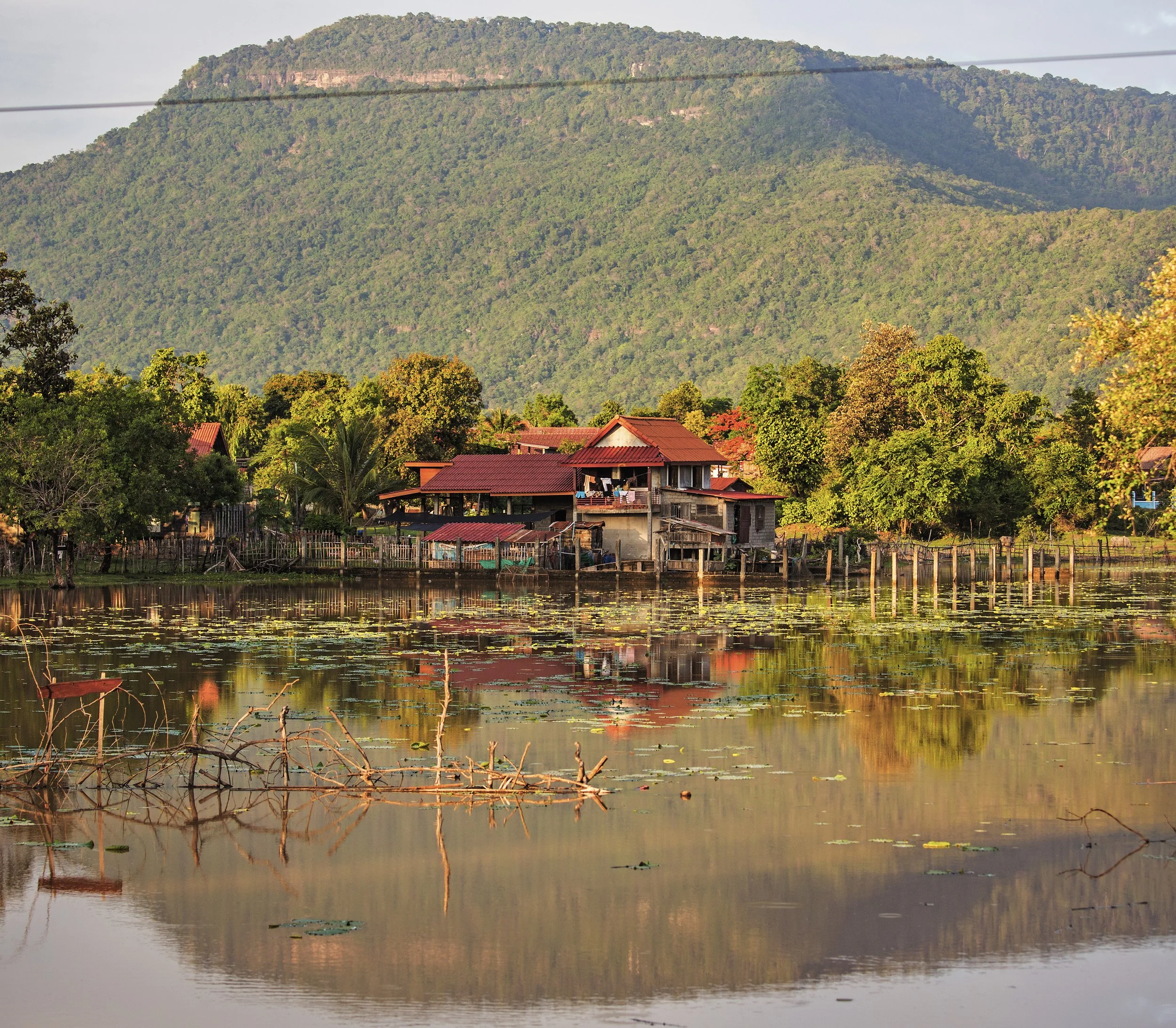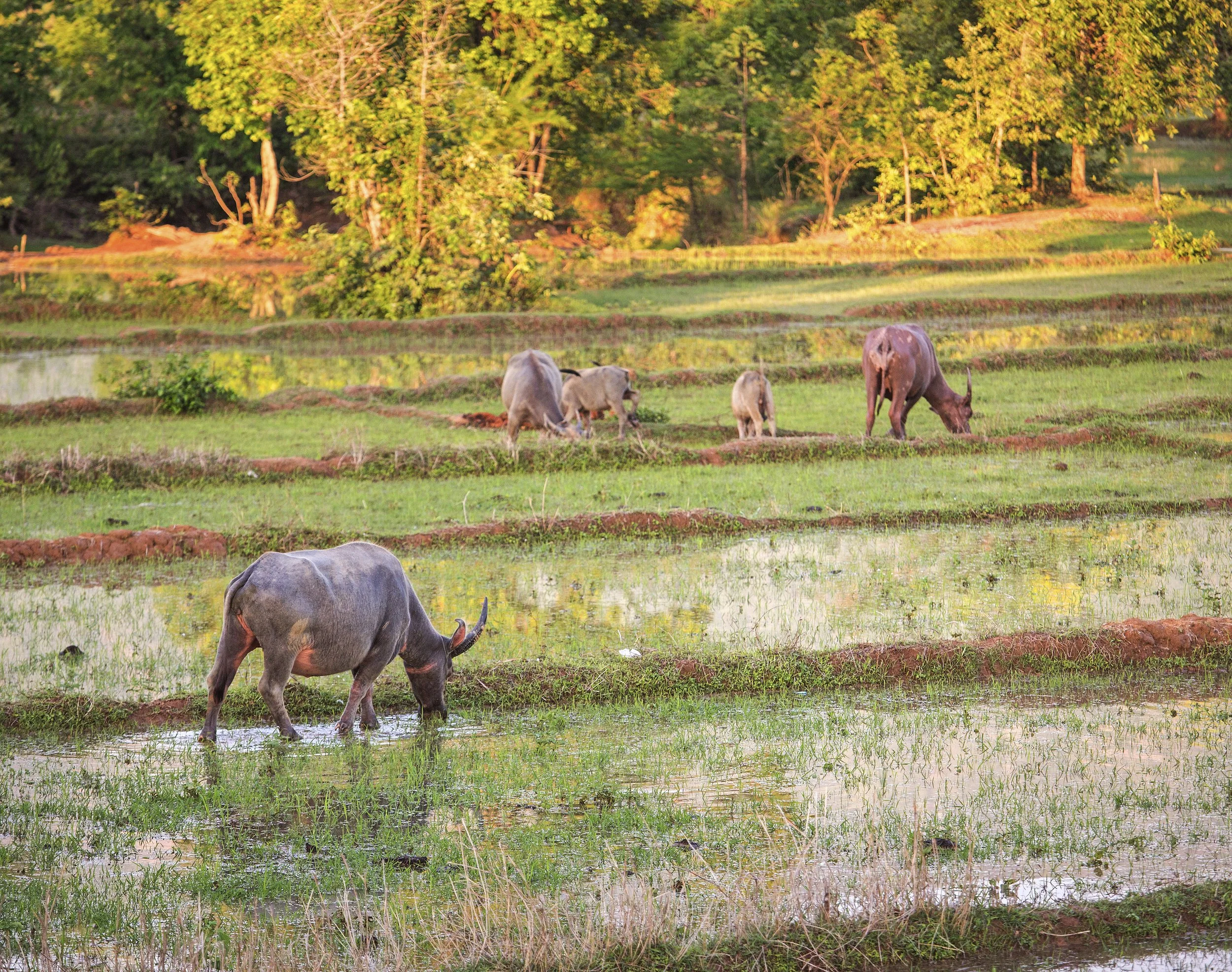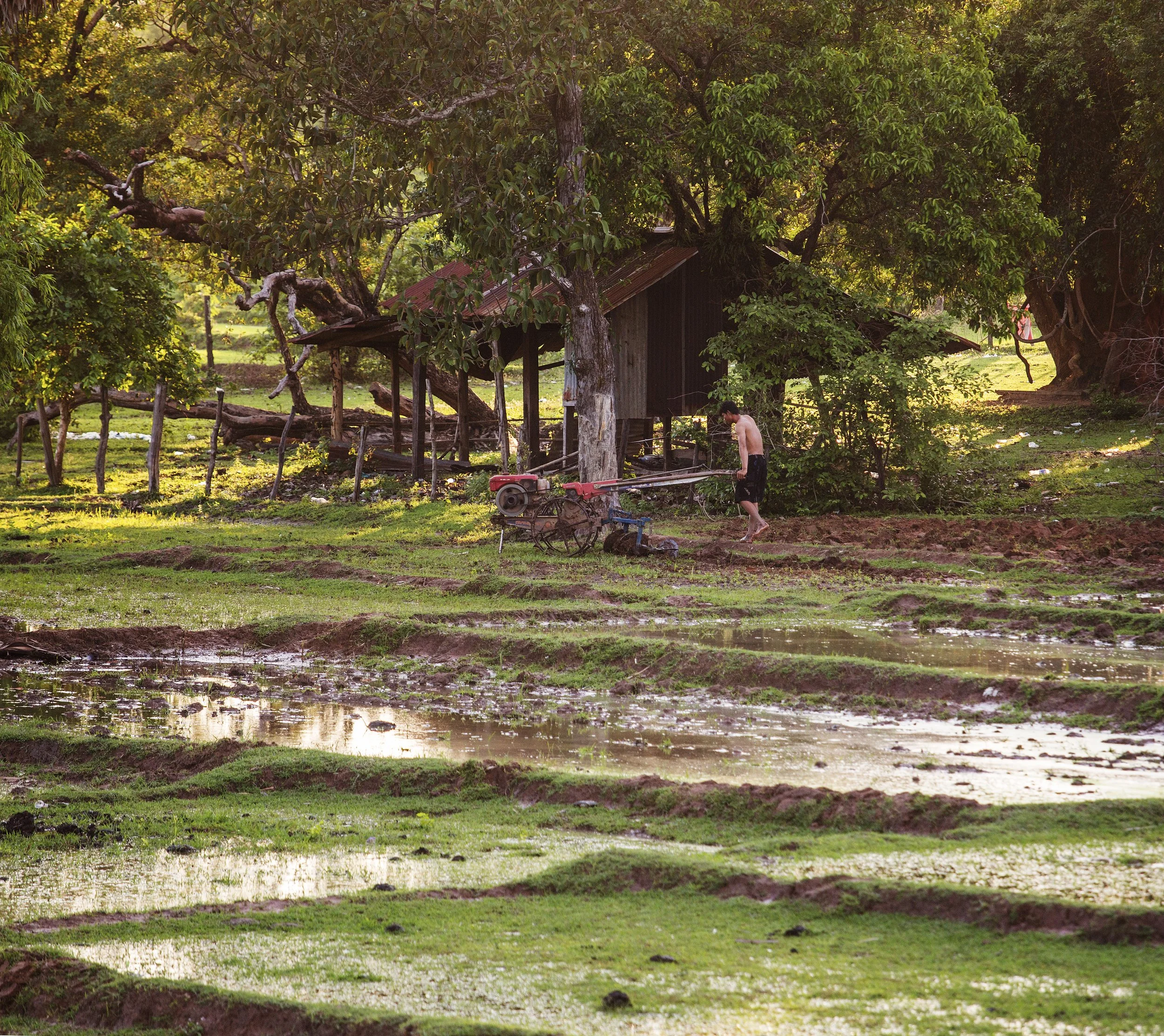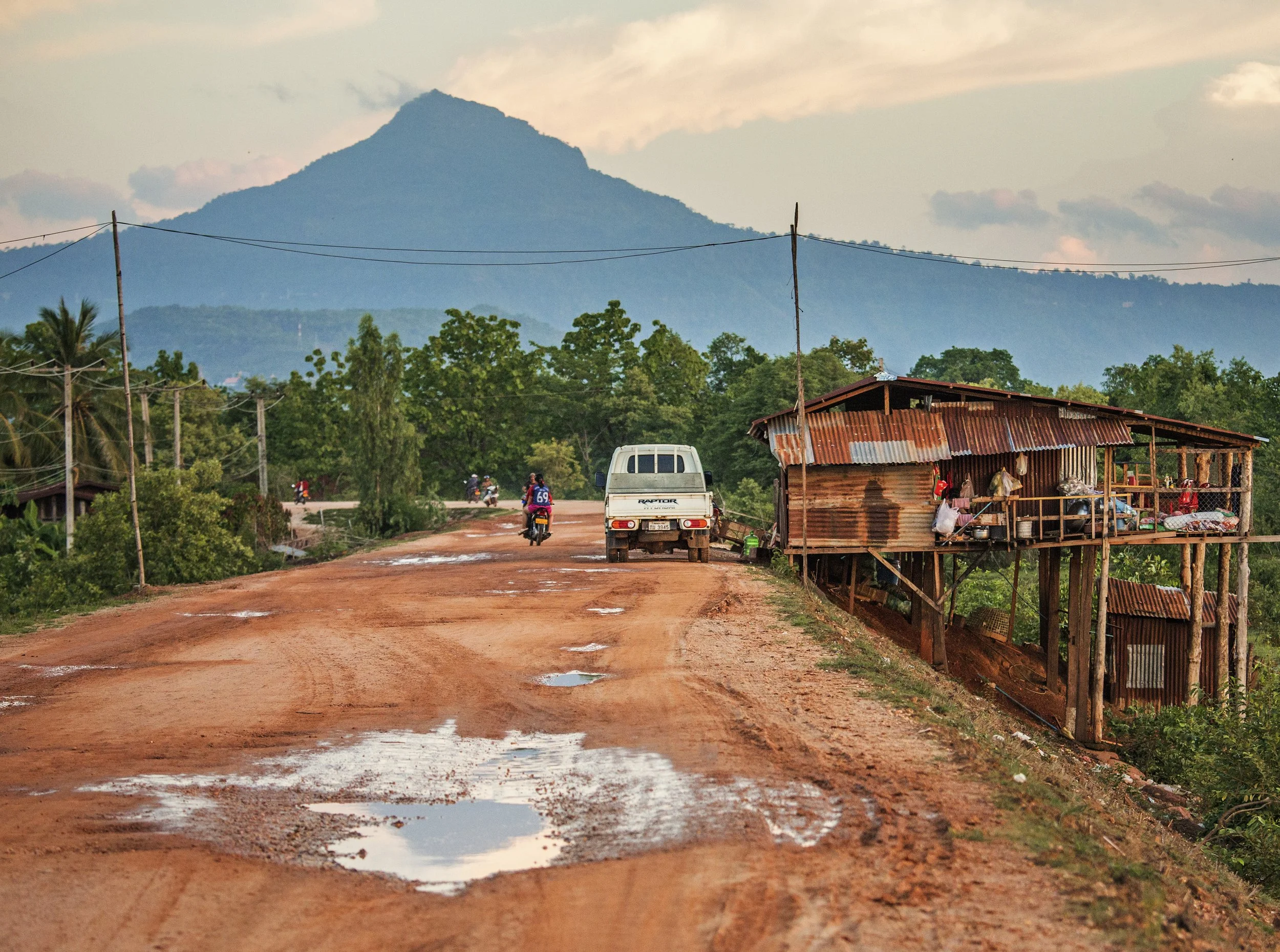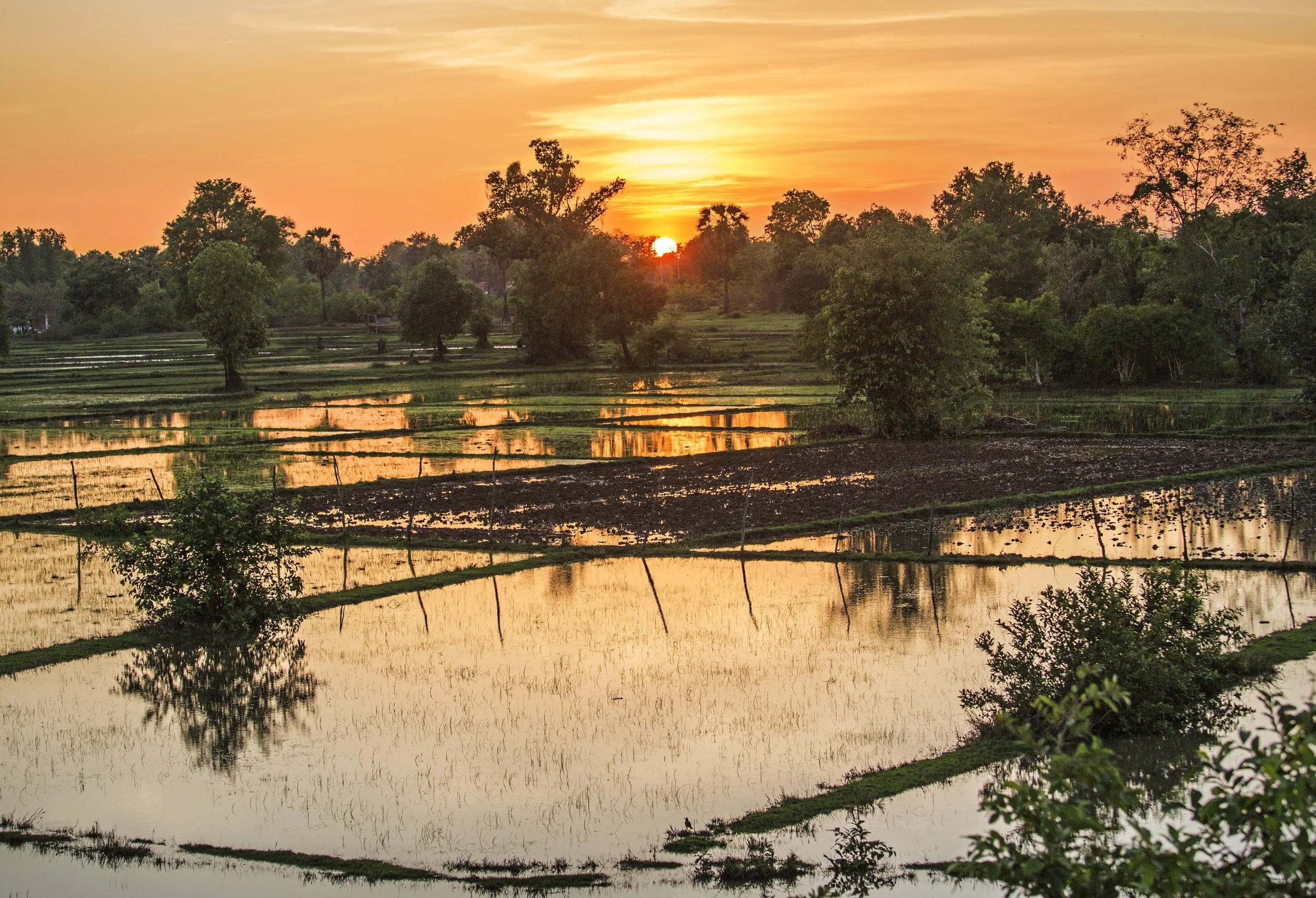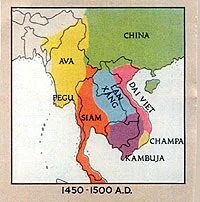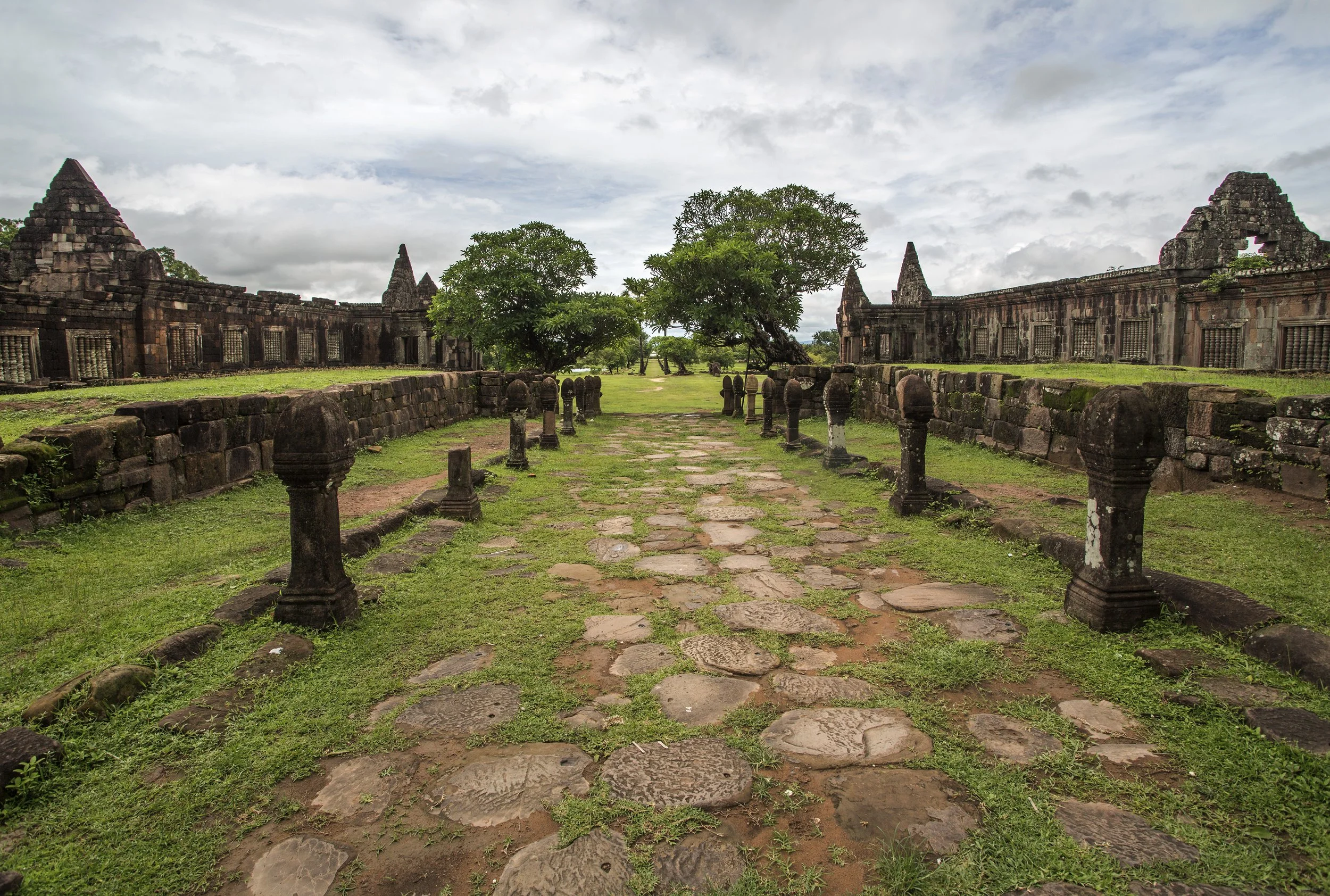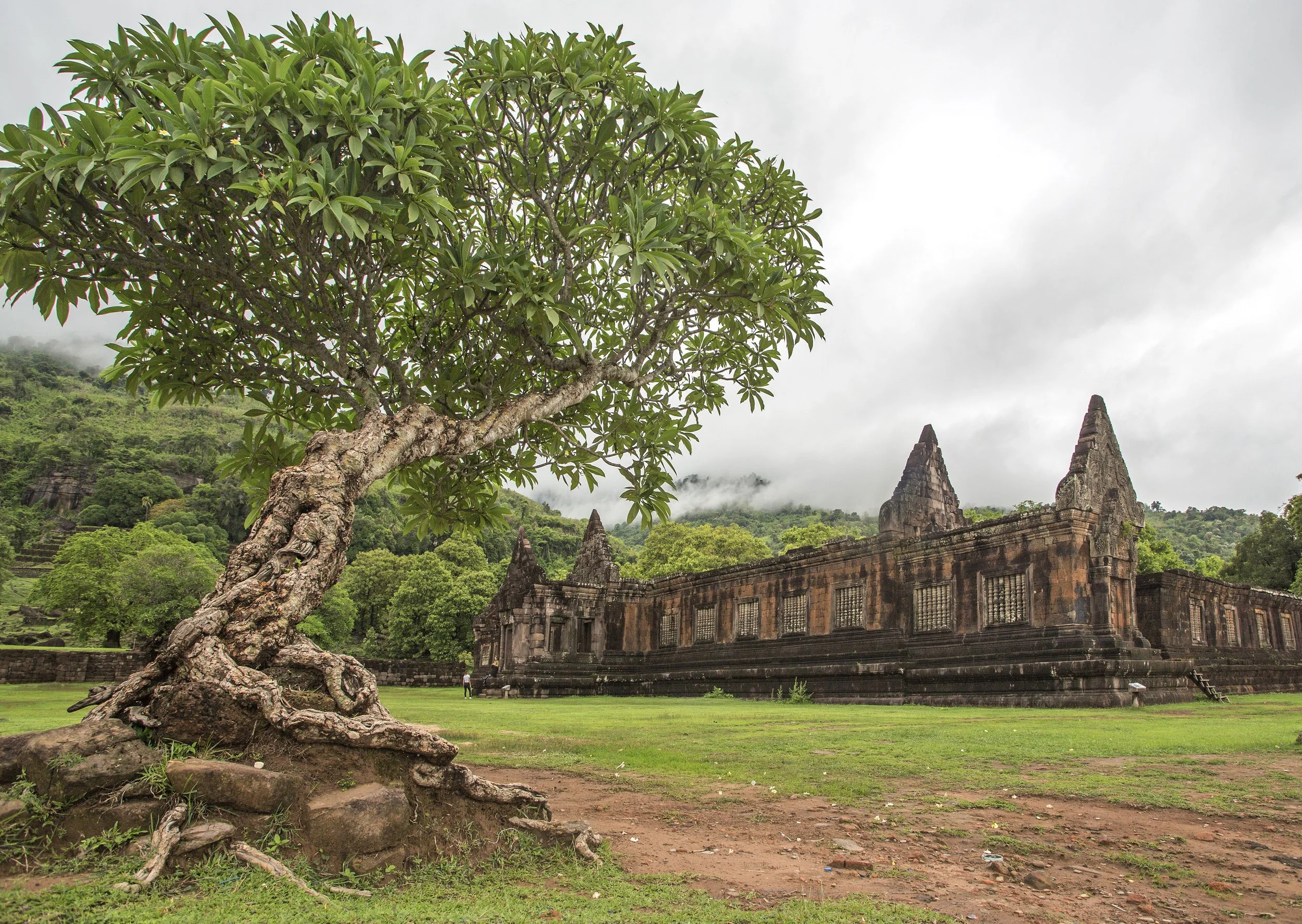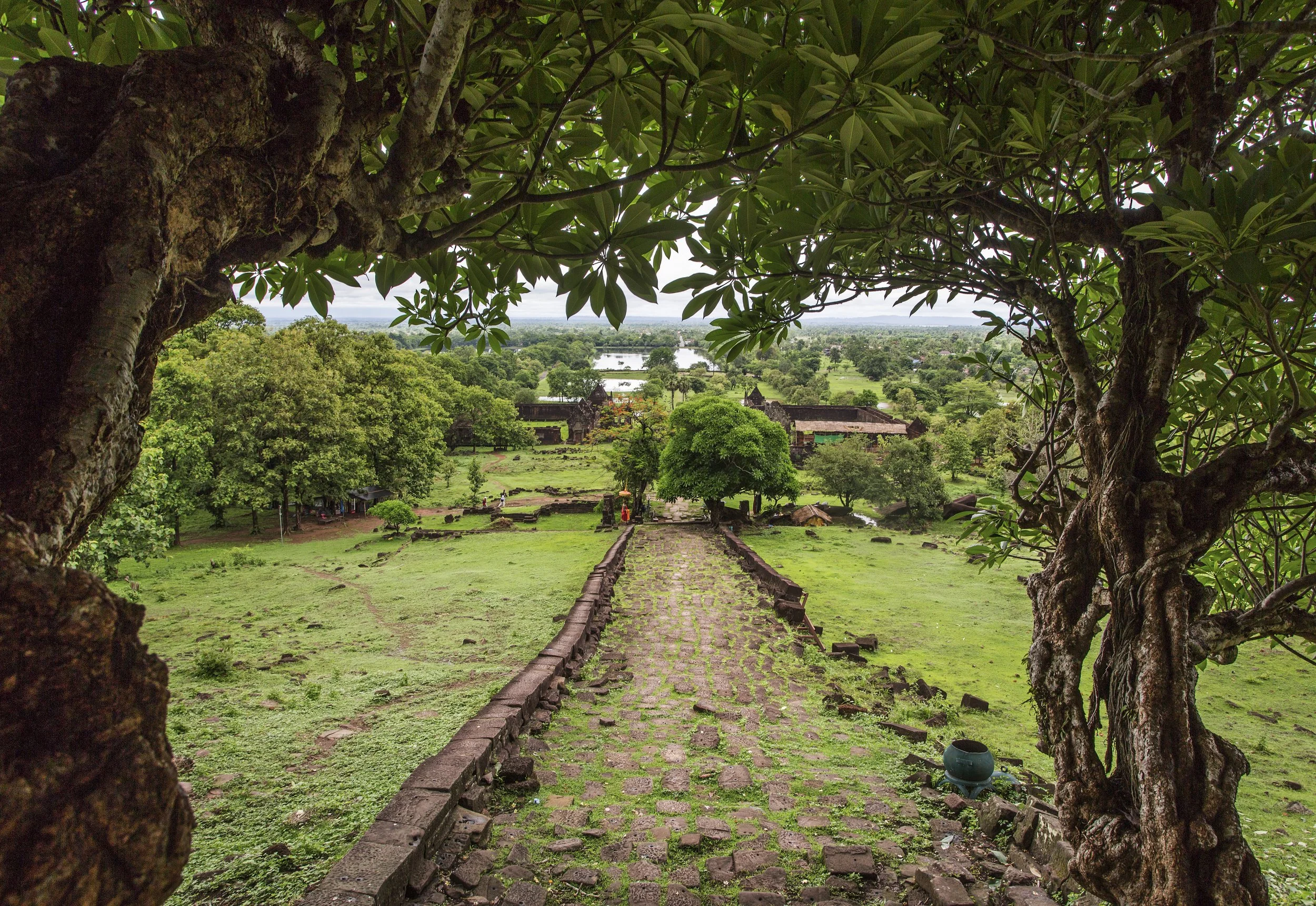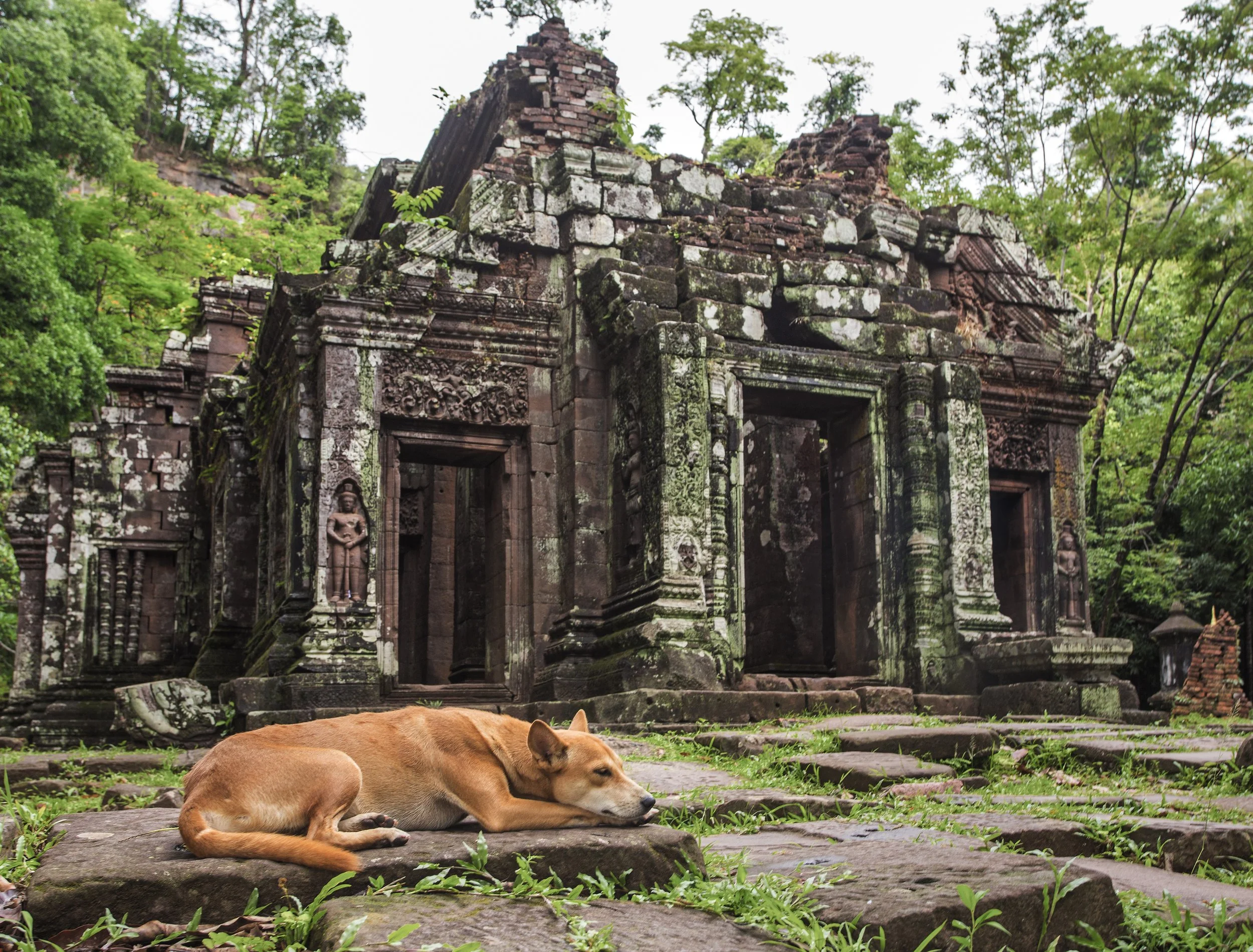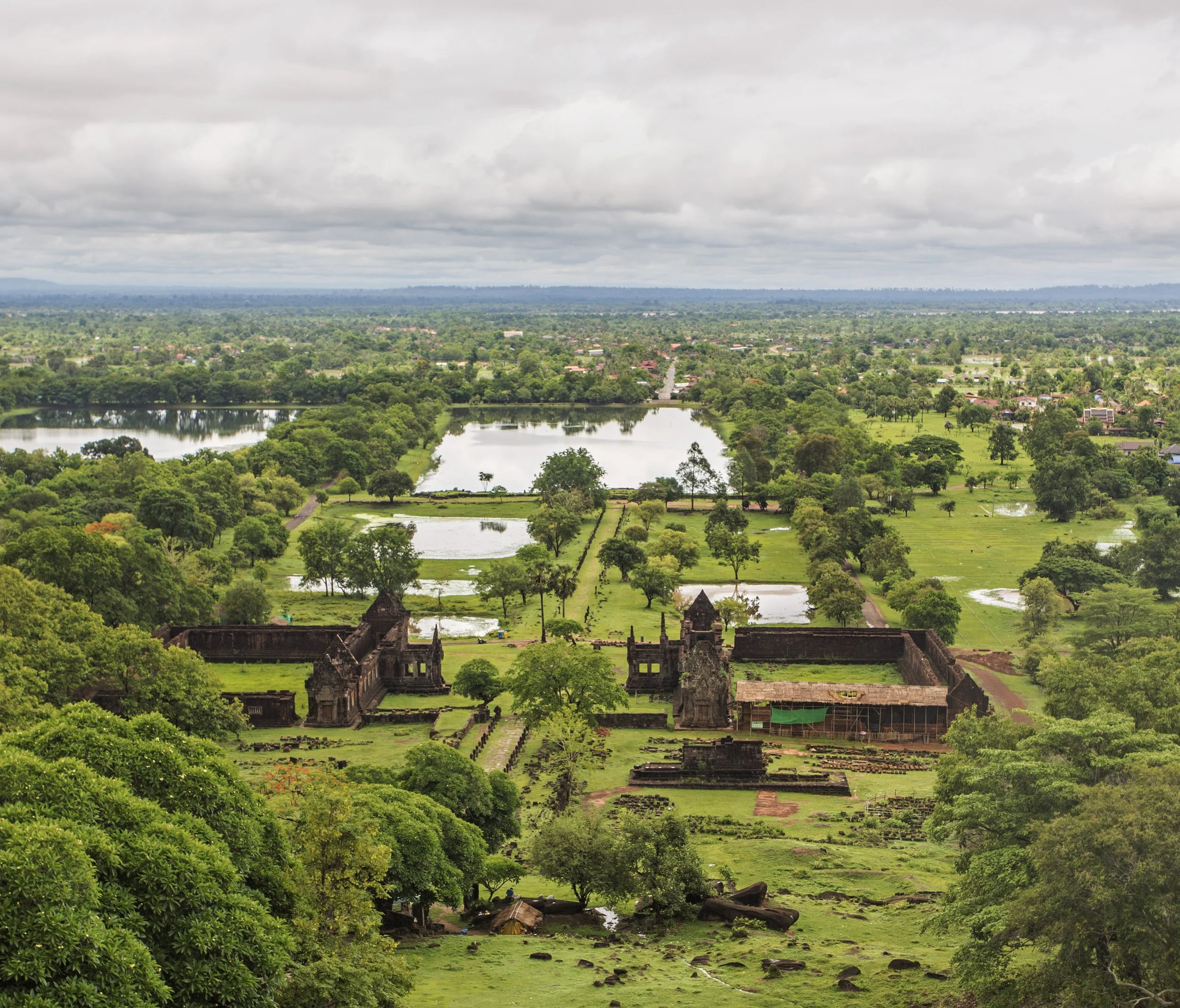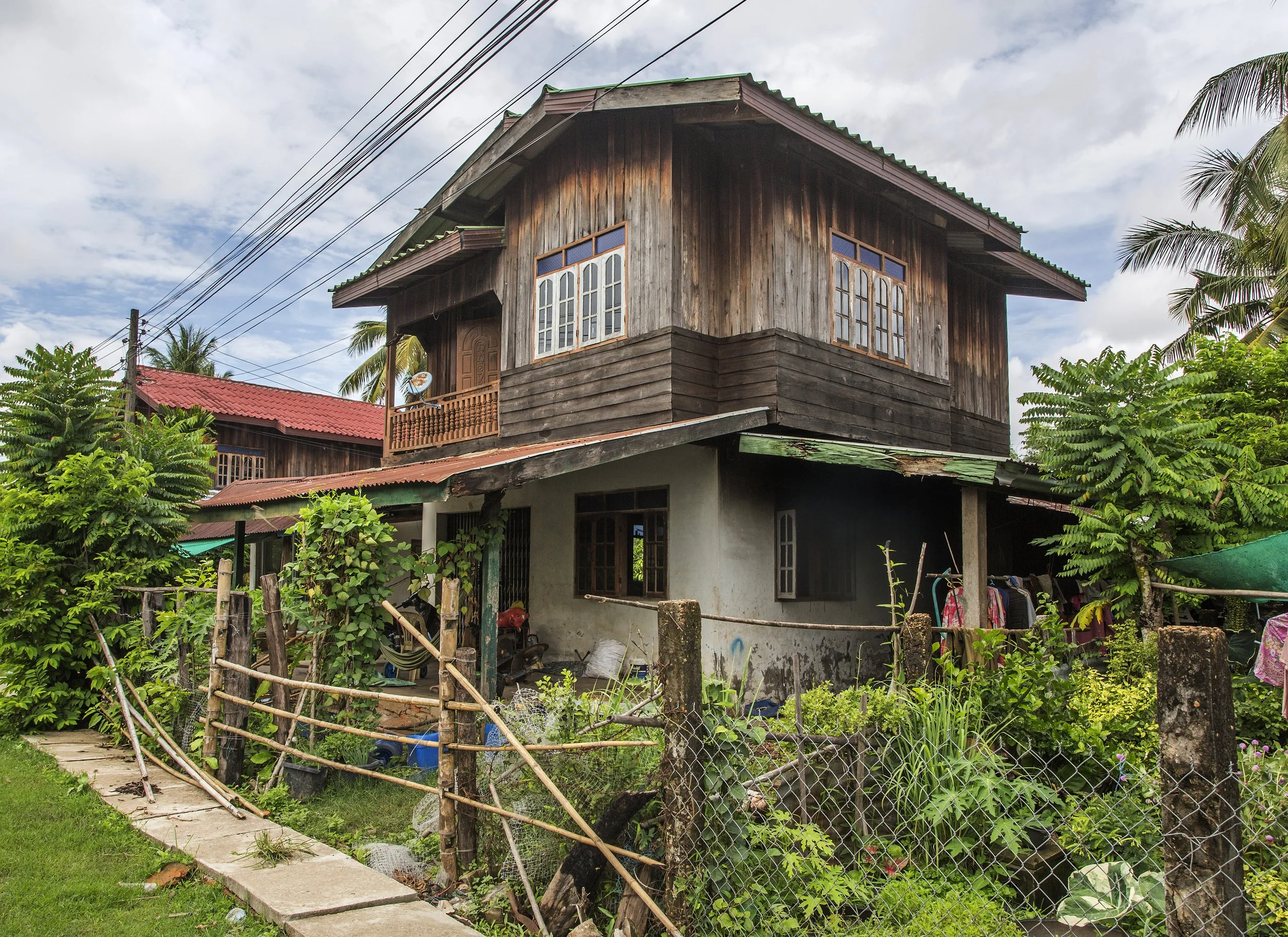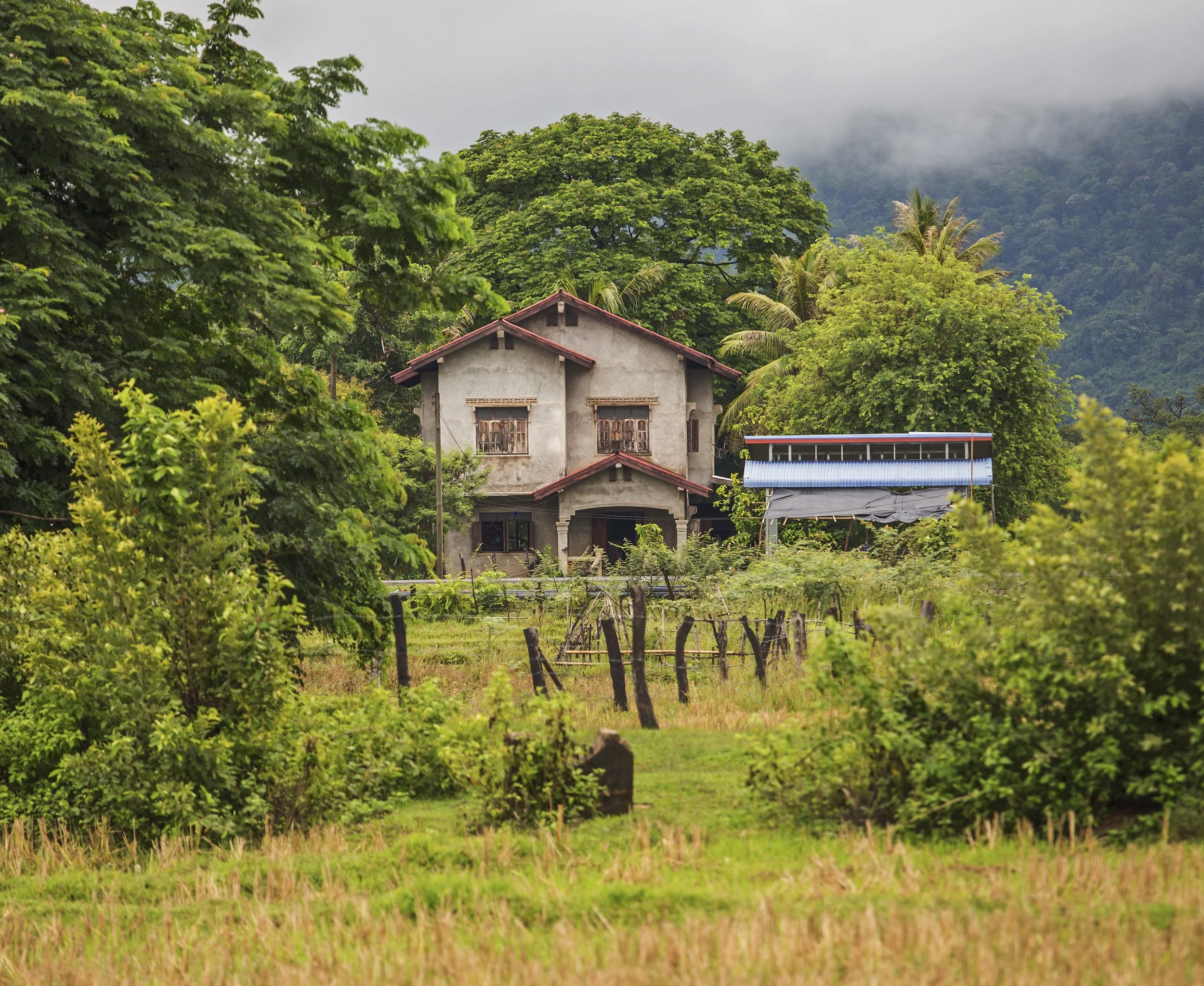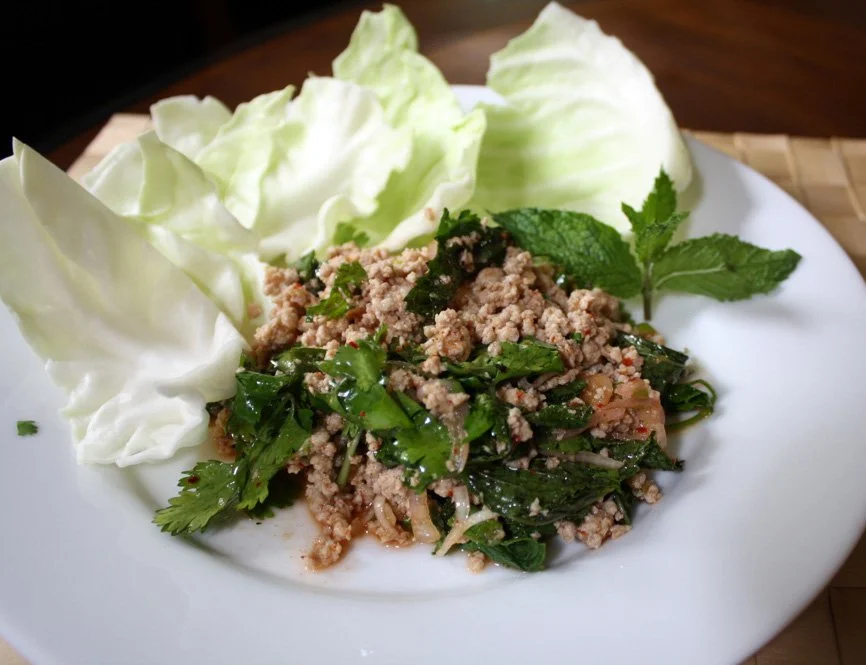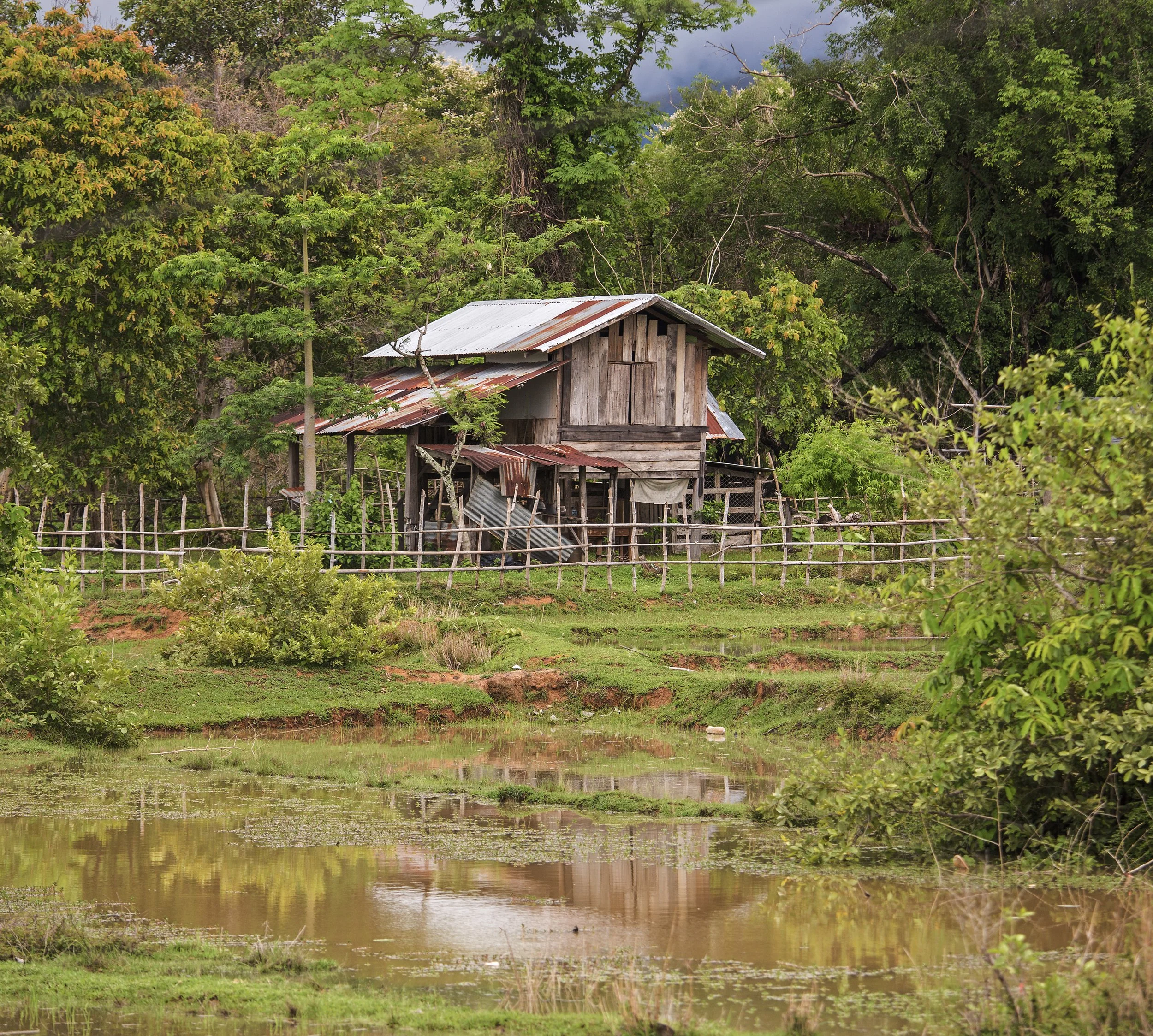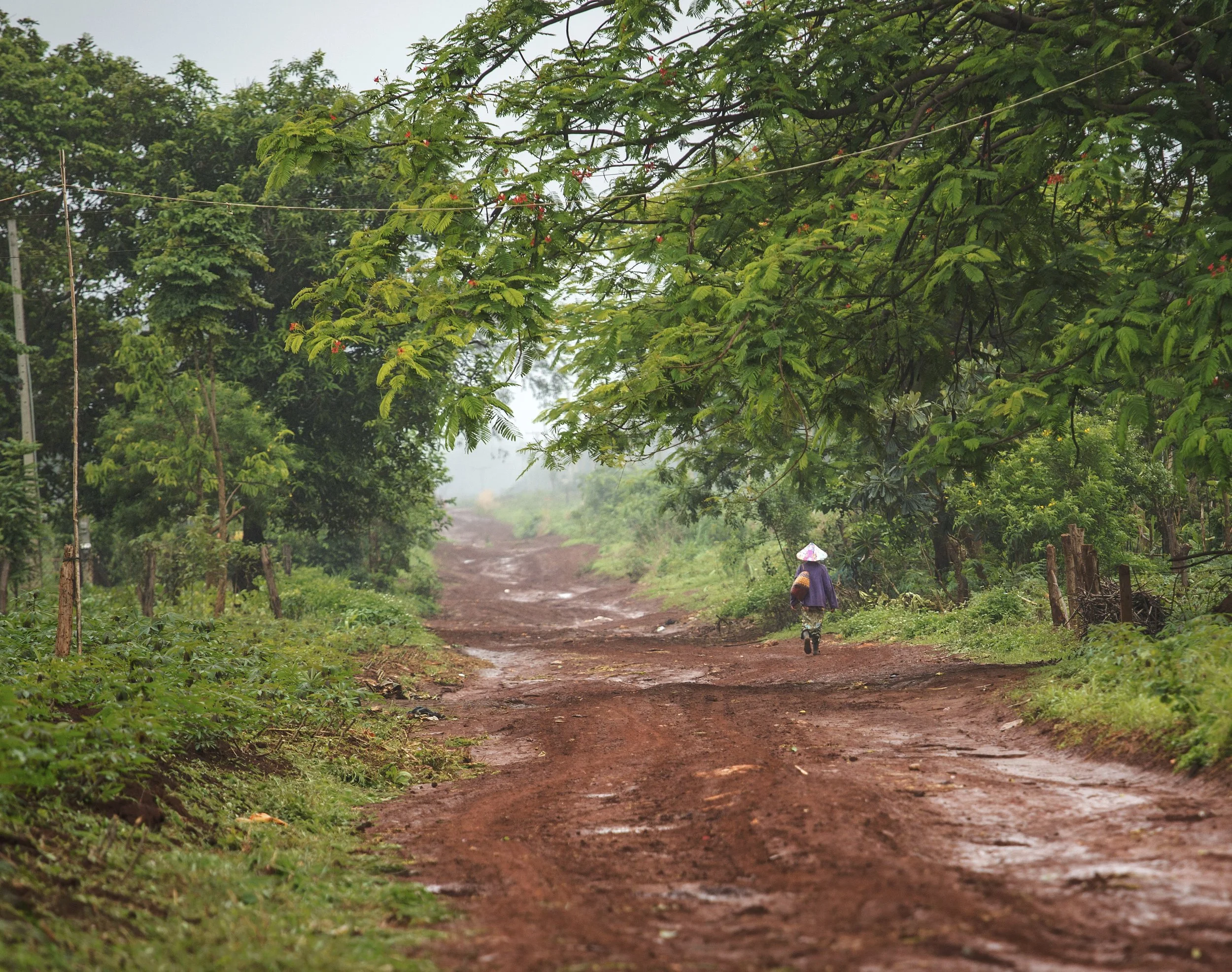Next stop: Sleepy little Laos. From Kratie it’s about 3 hours to the border, (visa on arrival) and then another three to Pakse, the 3rd largest city in Laos - clocking in at only 115,000 people! The south is the more densely populated part of Laos, compared the more mountainous north. For how big the country is, it’s almost hard to fathom how few people live in Laos. The whole country is only 7 million people! That’s way less than the Chicago metropolitan area. Meanwhile next door, Vietnam has over 100 million people. It really is pretty wild to think about, just how underpopulated and isolated the country is.
Nobody goes to Pakse to see Pakse, and like almost all “big cities” in Laos there’s very little of interest for a tourist to do. There’s maybe a few old french building to look at, a pagoda, you can wander around the local market, there’s a small night market that’s better for snacking than eating a real meal. You can roll the dice getting a massage, but there’s at least a 50/50 chance it’s going to be a very weak, untrained, body rub. I don’t think I took a single photo in the actual city, heh. That’s how you know that I think it’s a boring place!
A pretty crucial bridge, built by the Japanese in 2000
different perspective
Laos temples are a bit more ornate than Cambodian ones
The best thing to do in Pakse is get out of Pakse! Even just across the river there’s a mountain with a pagoda at the top that offers sweeping views of the whole city, which is quite nice at sunset. Driving around on a scooter it doesn’t take long before you’re in the countryside, which is by far my favorite part of Laos. The roads might suck, but rural Laos scenery is always rustic, quaint, and gorgeous. Here’s what you get driving 20 minutes outside of town…
My first full day in Laos I wanted to check out the Khmer temple (and unesco heritage site) Vat Phou, which is about an hour south of Pakse. It was built (well built up much further) at the height of the Khmer empire in the 11th century, when the Khmer kingdom covered most of southern Laos, eastern Thailand and southern Vietnam. It was originally built with the Hindu vision of the relationship between the gods and humanity, with Shiva being the primary god being worshipped. Hinduism had a massive influence in Cambodian culture, with Angkor Wat itself being dedicated to Vishnu. But over the course of many centuries the Hindu gods were slowly phased out by Buddhism. Eventually Buddhism became the state religion in Cambodia in the 13th century with Laos following suit.
By the 1300’s the Khmer Empire was in a state of decline, while Laos and it’s leader Fa Ngum rose to power and recovered the lands in the south (including Vat Phou) and established the Lan Xang empire, which would last until 1707. The end of the Angkor Kingdom is listed officially as 1431 with the fall of Angkor Thom to the Ayutthaya Kingdom of Thailand. The Ayutthaya would eventually sack the Cambodia capital in the late 1500’s, which is considered the beginning of their ‘dark age’, getting conquered by Thailand while slowing losing their Mekong delta region to Vietnam. Anyway, so the Cambodian temple is in current day Laos.
The first thing you’ll notice about the site of Vat Phou itself is how few people are there! I rolled up on my scooter around mid-morning, and didn’t see any other tourists around. I bought the ticket and then they give you a lift in a shuttle bus for about 5 minutes to the base of the ‘mountain’ where Vat Phou is located. It was a cloudy morning and at the temple, and there were maybe 7 or 8 people wandering the whole complex. It’s pretty cool to have such a place mostly to yourself! Definitely a worthwhile spot for the few visitors who spend much time in southern Laos.
Not very difficult to get a shot with nobody in it
cool looking path connecting the front promenade with the upper temple
The Nagas, mythical serpent creatures
Guard dog
This was the original Shiva temple
So that was a nice way to kill a couple hours. I still had plenty of time to ride around the area for a bit, which is kind of neat because the area nearby, Champasak, was the seat of the very small, independent Champasak kingdom (1713-1904). There’s really not a lot to see, but it has some nice houses.
Larb for lunch, Laos’ national dish
So while Vat Phou is cool, it is not the main attraction of the region. For the backpackers the most popular thing to do is the Bolavan Plateau Loop, which is a 3-5 day moto loop, and waterfall-hopping around the region’s primary geographical feature, the Bolavan Plateau. Which I happened to have already done, 14 years ago! My most striking memory from that trip wasn’t the scenery though, it was the two girls I was with falling off their moto in construction area, straight into a mud puddle, and being covered literally head to toe in mud haha. They were fine, they just needed a good hosing off!
But nowadays more people opt to do the Thakek Loop instead, which is another 6 hours north, where the scenery has the classic limestone karst formations. Or instead of doing the full Bolavan Plateau Loop, they do a 2-3 day mini loop. Which is what I’d be doing! Saving my energy for the Thakek loop. So the following day I had my small backpack pack and was off to do the mini-loop! Coffee and waterfalls!
